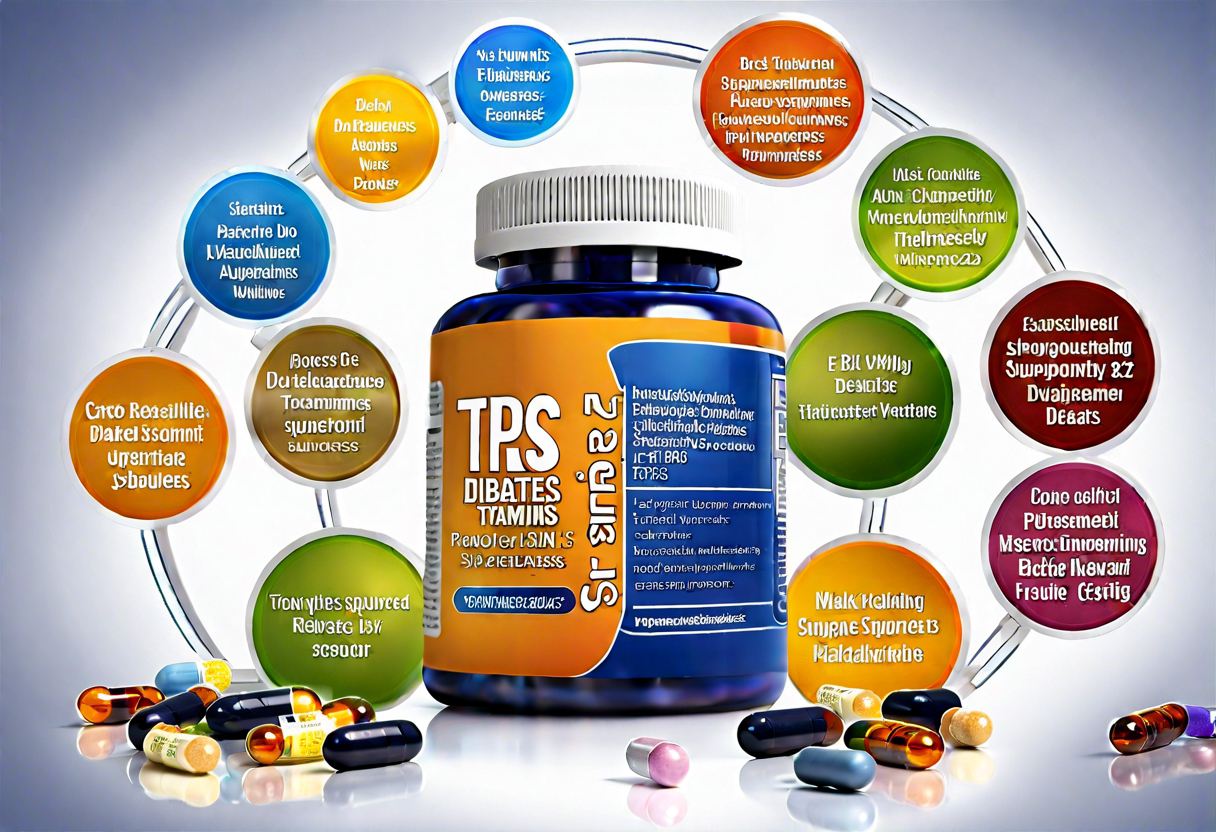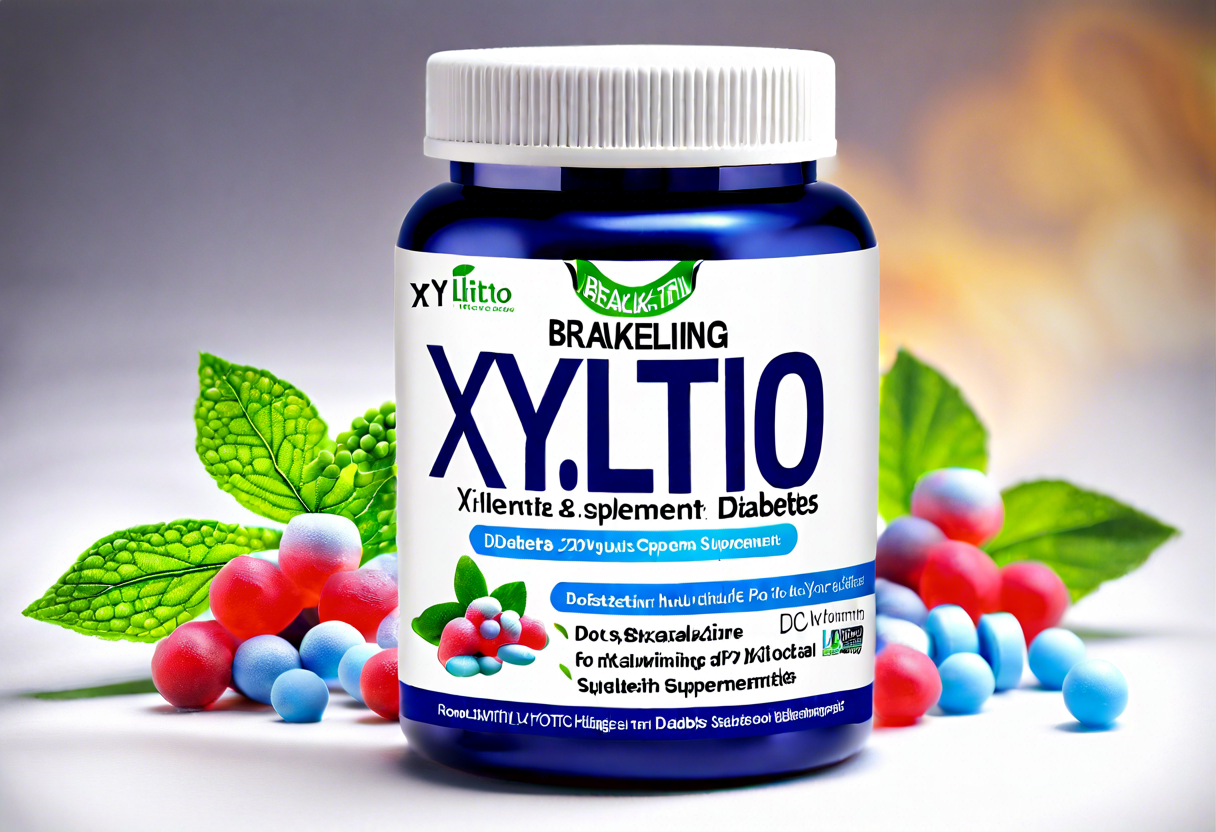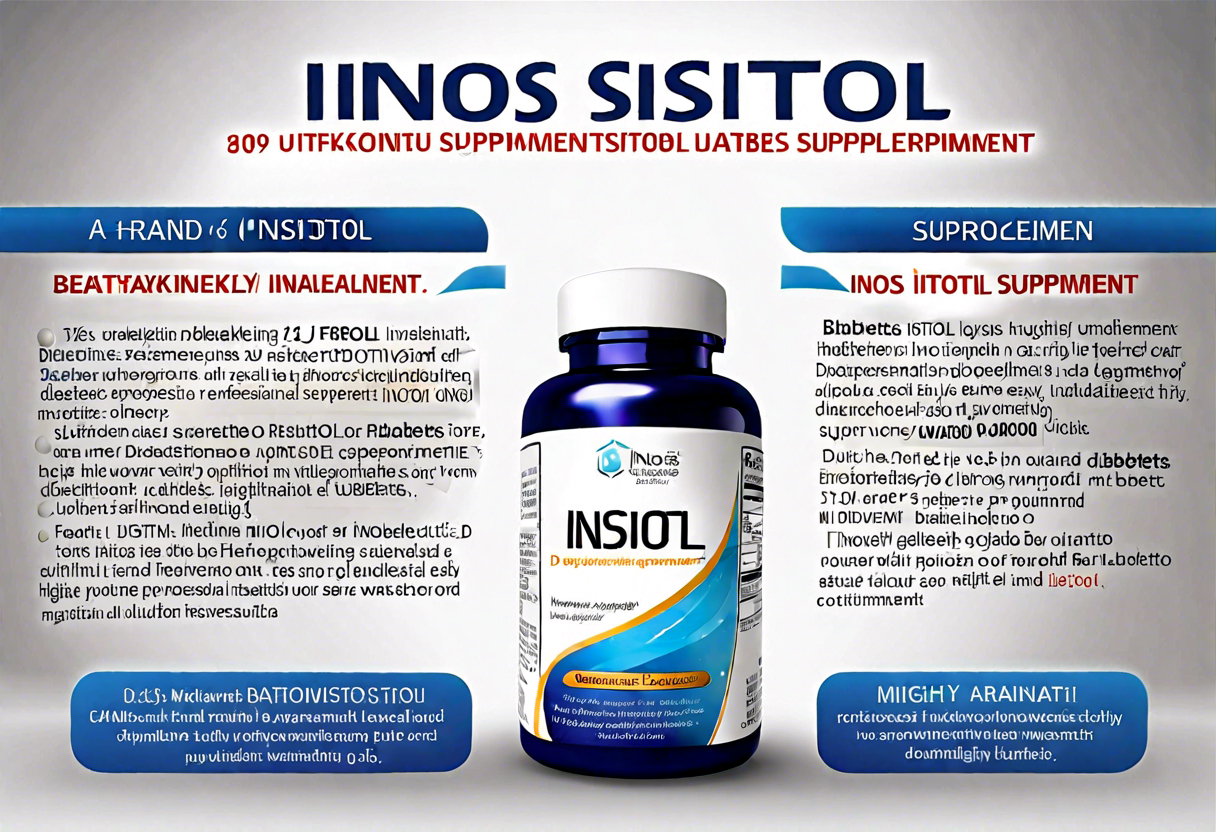Steps to Take Control of Your Health
Type 2 diabetes, a chronic condition characterized by high blood sugar levels, has long been considered a life-long illness. However, recent medical research suggests that for some individuals, it is possible to reverse this condition, allowing them to reach and maintain normal blood sugar levels without the use of medication. This is not achievable for everyone and does not signify a cure; rather, it involves a commitment to lifestyle changes and, in some cases, surgical interventions.
Lifestyle modifications are foundational in attempting to reverse type 2 diabetes. These changes typically include a well-planned diet and regular physical activity, which can improve the body’s sensitivity to insulin and help manage weight. Dietary adjustments can vary but often emphasize reducing caloric intake, particularly from carbohydrates, to aid in blood sugar control.
In certain cases, bariatric surgery may be considered for individuals who are significantly overweight and have not achieved the desired outcomes through lifestyle changes alone. This type of surgery can lead to dramatic improvements in blood sugar levels, but it does come with risks and requires a lifelong commitment to dietary habits and monitoring. Each individual’s situation is unique, and any plan to address type 2 diabetes should be developed in close consultation with healthcare professionals.
Understanding Type 2 Diabetes
Type 2 diabetes involves a chronic elevation of blood sugar levels due to insulin resistance or a lack of insulin production. Proper management of this condition is crucial to prevent complications.
Causes of Type 2 Diabetes
The development of Type 2 diabetes is often linked to a combination of genetic and lifestyle factors. Key contributors include:
- Genetics: A family history of diabetes can increase risk.
- Weight: Being overweight significantly raises diabetes risk.
- Inactivity: Physical inactivity can lead to increased insulin resistance.
- Age: The risk increases with age, particularly after 45 years.
- Diet and Lifestyle: Poor dietary choices and sedentary lifestyles contribute.
Symptoms and Diagnosis
Symptoms of Type 2 diabetes may be mild and easily overlooked. Common symptoms include:
- Increased thirst and urination: A classic sign of high blood sugar.
- Fatigue: High blood sugar levels can lead to tiredness.
- Blurred vision: High glucose can cause vision issues.
For diagnosis, medical professionals use tests such as:
- Fasting Plasma Glucose (FPG): Measures blood sugar after a fast.
- Oral Glucose Tolerance Test (OGTT): Assesses blood sugar after a sugary drink.
- Hemoglobin A1C: Indicates average blood sugar levels over the past 3 months.
Complications Related to Diabetes
Without proper management, Type 2 diabetes can lead to severe health issues, such as:
- Cardiovascular Disease: A leading cause of morbidity in diabetics.
- Neuropathy: Over time, excess glucose can damage nerve fibers.
- Kidney Damage (Nephropathy): Diabetes can cause long-term damage to the kidneys.
Regular monitoring and management can help mitigate these risks.
Dietary Modifications
Effective management of Type 2 diabetes can be significantly influenced by dietary changes. These modifications are aimed at controlling blood sugar levels and promoting overall health.
Low-Carb and Ketogenic Diets
Low-carbohydrate diets limit the intake of carbs to promote blood sugar management. Ketogenic diets, a stricter form of low-carb diets, involve high fat intake and very low carbohydrates, which can lead to improved insulin sensitivity. A typical keto diet breakdown might be:
- 70-75% fat
- 20-25% protein
- 5-10% carbohydrates
It’s crucial to consult healthcare professionals before starting a ketogenic diet due to its restrictive nature.
Fiber-Rich Foods
Incorporating fiber-rich foods into one’s diet can have a positive effect on blood sugar control. Foods high in fiber slow down the digestion and absorption of sugars, helping to maintain a steady blood glucose level. Examples of fiber-rich foods include:
- Legumes (beans, lentils)
- Whole grains (oatmeal, quinoa)
- Fruits (apples, berries)
- Vegetables (broccoli, leafy greens)
Aiming for at least 25 grams of fiber per day for women and 38 grams for men is recommended.
Controlling Glycemic Load
The glycemic load (GL) takes into account the amount of carbohydrate in a portion of food together with how quickly it increases blood glucose levels. Foods with a lower GL are typically better for blood sugar control. Here’s a simple GL categorization:
- Low: 10 or less
- Medium: 11-19
- High: 20 or more
Selecting foods with a low to medium glycemic load can help manage diabetes more effectively.
Lifestyle Changes
Effective management of Type 2 diabetes often requires adopting a series of lifestyle changes that can help control blood sugar levels and improve overall health.
Increasing Physical Activity
Regular physical exercise is crucial for individuals with Type 2 diabetes. The American Diabetes Association recommends at least 150 minutes of moderate-intensity aerobic activity per week. Additionally, they should engage in strength training activities two to three times per week. Activities could include:
- Walking or jogging: Continuously build up to 30 minutes each session.
- Cycling: Low-impact and helps improve cardiovascular health.
- Swimming: Provides full-body exercise with minimal joint strain.
Weight Management Strategies
Maintaining a healthy weight is a key aspect of controlling Type 2 diabetes. Strategies include:
- Balanced Diet: Emphasis on fruits, vegetables, lean proteins, and whole grains.
- Portion Control: Using measuring tools to ensure proper serving sizes.
- Regular Meal Patterns: Consistent meal timing can help manage blood glucose levels.
Stress Reduction Techniques
Chronic stress can negatively affect blood glucose control. It’s essential for patients to implement stress reduction techniques such as:
- Mindfulness and meditation: Practice daily to enhance mental well-being.
- Regular sleep patterns: Aim for 7-9 hours of quality sleep each night.
- Deep-breathing exercises: Use to lower stress-induced blood sugar spikes.
Medical Management
In managing type 2 diabetes, medical interventions focus on regulating blood sugar levels, preventing complications, and maintaining overall health. Medications are often prescribed, alongside regular monitoring of blood glucose and routine health check-ups.
Medications for Type 2 Diabetes
A variety of medications are available to manage blood sugar levels in type 2 diabetes. Metformin is typically the first-line treatment and works by improving the body’s sensitivity to insulin and reducing the amount of glucose produced by the liver. Other oral drugs include sulfonylureas, which stimulate the pancreas to release more insulin, and DPP-4 inhibitors, which help increase insulin production and decrease glucose production.
For some individuals, injectable medications like insulin or GLP-1 receptor agonists may be necessary. Insulin helps to regulate blood sugar levels by facilitating the entry of glucose into the cells. GLP-1 receptor agonists improve insulin release and decrease glucagon secretion.
Medication options can include:
- First-line treatment: Metformin
- Sulfonylureas: Glipizide, Glyburide
- DPP-4 Inhibitors: Sitagliptin, Saxagliptin
- Injectables:
- Insulin therapy
- GLP-1 receptor agonists (e.g., Exenatide)
Monitoring Blood Glucose Levels
Regular monitoring of blood glucose levels is a critical component of type 2 diabetes management. Self-monitoring of blood glucose (SMBG) allows for timely decisions on diet, exercise, and medication. Continuous glucose monitoring (CGM) systems provide real-time data and trends over several days, helping to track glucose levels round the clock.
Healthcare professionals may recommend:
- SMBG frequency: Varies per individual treatment plan
- CGM devices: Provide detailed glucose trends
Regular Health Check-ups
Individuals with type 2 diabetes should have regular health check-ups. These appointments are essential for assessing the effectiveness of current treatments, making necessary adjustments, and screening for diabetes-related complications such as neuropathy, nephropathy, and retinopathy.
A typical check-up schedule may include:
- HbA1c tests: Every 3-6 months to assess long-term glucose control
- Blood pressure and cholesterol checks: At least once a year
- Screenings for complications: Yearly eye exams and foot examinations
Natural Remedies and Supplements
Natural remedies and supplements can play a supporting role in the management of type 2 diabetes. They may help regulate blood glucose levels and improve metabolic health when used in conjunction with conventional treatments.
Herbal Therapies
Cinnamon: Studies suggest that cinnamon may help lower blood sugar and improve insulin sensitivity. A typical dose is 1 to 6 grams per day.
Bitter Melon: This plant contains compounds with insulin-like effects. It’s often consumed as a vegetable in Asian cuisine or taken as a supplement, with recommended doses ranging from 900 mg to 2000 mg daily.
Vitamins and Minerals
Magnesium: Low levels of magnesium may impede insulin function, and supplementation can improve blood sugar control in type 2 diabetes.
| Mineral | Daily Dosage | Potential Effect |
|---|---|---|
| Magnesium | 200-400 mg | May improve insulin sensitivity and glucose regulation |
Chromium: This mineral is essential for carbohydrate and lipid metabolism. Supplements may help improve the body’s response to insulin or lower blood sugar in those with diabetes.
- Vitamin D: Adequate vitamin D levels are crucial for insulin production and function, and a daily dose of 1000-2000 IU is frequently recommended.
Probiotics and Gut Health
Lactobacillus and Bifidobacterium: Specific strains of these probiotics may help regulate blood sugar levels. They are available in fermented foods like yogurt and kefir or as dietary supplements.
| Probiotic Strain | Form | Potential Benefits |
|---|---|---|
| Lactobacillus | Capsule / Food | May improve blood sugar control |
| Bifidobacterium | Capsule / Food | Could help with glucose metabolism |
Including these probiotics as part of a balanced diet might support a healthy gut microbiota, which is thought to influence metabolic health and diabetes management.
Behavioral Interventions
Behavioral interventions are crucial in managing and potentially reversing type 2 diabetes. They involve lifestyle modifications and psychological support to help patients make and maintain healthy choices.
Cognitive Behavioral Therapy
Cognitive Behavioral Therapy (CBT) is an effective approach in changing the behavior and mindset of individuals with type 2 diabetes. CBT aims to:
- Identify negative thought patterns
- Develop practical coping strategies
Techniques such as goal setting and self-monitoring of food and physical activity are central to its success.
Support Groups
Support Groups provide a platform for individuals to share experiences and strategies for managing type 2 diabetes. Members benefit from:
- Mutual emotional support
- Increased accountability
- Sharing of practical tips
These groups can be found both in person and online, offering flexibility to participants.
Health Coaching
Health Coaching empowers individuals with type 2 diabetes to take control of their health. Coaches work with clients to:
- Set personalized goals
- Develop action plans
- Foster sustainable habits
They often help track progress and adjust plans as necessary to ensure continual improvement.
Technological Advancements
Technological advancements are playing a crucial role in managing Type 2 diabetes. With new developments in monitoring and treatment tools, patients have more control over their condition.
Continuous Glucose Monitoring
Continuous Glucose Monitoring (CGM) systems have transformed glucose tracking. CGM devices such as the Dexcom G6 and FreeStyle Libre provide real-time glucose readings. These devices use a small sensor inserted under the skin to measure glucose levels in interstitial fluid. CGM systems offer numerous benefits:
- Real-time glucose levels: enabling quick adjustments to lifestyle or diet.
- Trend tracking: helping in understanding how activities affect glucose levels.
Insulin Pumps
Insulin pumps have become more sophisticated. Modern pumps like the Medtronic MiniMed and Tandem t X2 can integrate with CGM systems to adjust insulin doses automatically. Key features include:
- Basal rate adjustments: personalized to the patient’s daily needs.
- Bolus calculations: based on the carbohydrate intake and current glucose level.
Mobile Health Apps
Mobile health apps are instrumental in diabetes management. They provide platforms for data analysis and sharing information with health care providers. Popular apps include:
- mySugr: offers logging and analysis of blood glucose, food intake, and insulin use.
- Glooko: allows integration with CGMs and glucose meters for comprehensive data analysis.
Through these advancements, individuals with Type 2 diabetes have tools to better manage their condition and potentially reverse diabetes under proper medical guidance.
Preventing Type 2 Diabetes
Preventing Type 2 Diabetes centers around recognizing risk factors, engaging in lifestyle modifications, and detecting the condition early.
Prediabetes and Risk Factors
Prediabetes is a state where blood sugar levels are higher than normal, but not high enough to be classified as diabetes. Key risk factors include:
- Genetics: A family history of Type 2 Diabetes increases risk.
- Weight: Obesity and excess weight, particularly abdominal fat, are significant risk factors.
- Age: People over 45 years old have a higher risk.
- Physical Inactivity: Sedentary lifestyles elevate the likelihood of developing diabetes.
Lifestyle Intervention Programs
Lifestyle intervention programs aim to educate and promote behaviors that can prevent or delay the onset of Type 2 Diabetes. They focus on:
- Diet: Eating fiber-rich, whole foods and reducing intake of processed sugars and unhealthy fats.
- Exercise: Regular physical activity of at least 150 minutes of moderate exercise per week.
- Education: Comprehensive programs that teach the importance of diet, exercise, and medication adherence if necessary.
These interventions have been shown to reduce the risk of progressing from prediabetes to Type 2 Diabetes by up to 58%.
Screening and Early Detection
Screening for Type 2 Diabetes is crucial for early detection and preventing complications. Guidelines recommend:
- Screening timelines: Adults should have their blood sugar tested starting at age 45, or sooner if they have risk factors.
- Testing methods: A1C, fasting plasma glucose (FPG), or oral glucose tolerance test (OGTT).
- Frequency of tests: At minimum, biennial testing is suggested for those with normal results, with more frequent testing for those with prediabetes.
Early detection through screening can lead to timely interventions, significantly lowering the chances of developing full-blown diabetes.
Frequently Asked Questions
Effective management of type 2 diabetes often hinges on informed lifestyle choices and understanding the condition’s intricacies. Below are some of the most frequently asked questions to clarify these aspects.
What dietary changes can help manage type 2 diabetes?
Adjusting one’s diet to include a balance of low glycemic index foods, high-fiber vegetables, lean proteins, and healthy fats can significantly impact blood sugar control. Portion control and meal consistency also play key roles.
Is it possible to manage type 2 diabetes with weight loss, and if so, how much is typically required?
Weight loss can improve insulin sensitivity and blood sugar levels, and often, a reduction of 5-10% of body weight is recommended. However, individual requirements may vary, and one should consult a healthcare provider.
Over what timeframe might individuals see improvements in their type 2 diabetes symptoms with lifestyle changes?
Improvements can be seen as early as a few days to weeks after implementing dietary changes, increased physical activity, and weight management. Long-term commitment is essential for sustained benefits.
Are there permanent solutions for managing type 2 diabetes?
While there is no known permanent cure for type 2 diabetes, the condition can be effectively managed through lifestyle modifications, medication, and regular monitoring to maintain normal blood sugar levels.
Which specific foods are beneficial for someone looking to manage their type 2 diabetes?
Foods such as non-starchy vegetables, berries, nuts, seeds, whole grains, and lean meats are beneficial. Incorporating foods with a low glycemic load is crucial for blood sugar stabilization.
What are common strategies for effectively managing type 2 diabetes?
Common strategies include adhering to a structured meal plan, engaging in regular physical activity, monitoring blood sugar levels, and maintaining a healthy weight. Medication may be utilized as prescribed by healthcare professionals.









